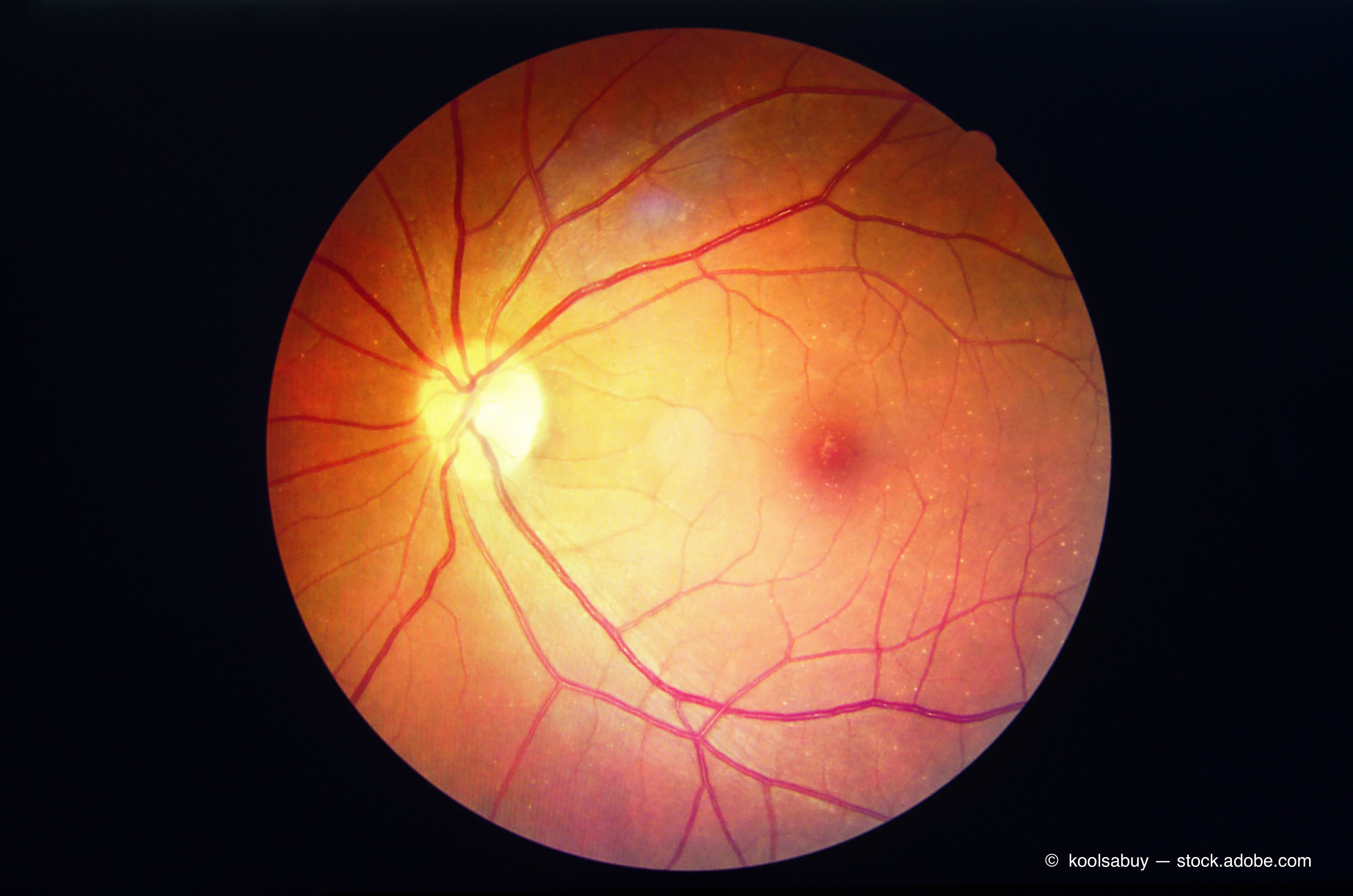PANORAMA study outlines variables to watch when managing NPDR
During a presentation at the American Society of Retina Specialists 2021 annual meeting in San Antonio, W. Lloyd Clark, MD, presented results of the PANORAMA Study. The focus of the study, Clark said, was to identify the factors that increase the risk of complications in patients with nonproliferative diabetic retinopathy to provide information for making decisions on treatment choices.
Retinal nonperfusion and leakage areas are important variables to consider when managing patients with nonproliferative diabetic retinopathy, according to PANORAMA investigators. (File image)

Retinal nonperfusion and leakage areas are important variables to consider when managing patients with nonproliferative diabetic retinopathy (NPDR), according to results of the PANORAMA Study presented at the American Society of Retina Specialists 2021 annual meeting in San Antonio, Texas
W. Lloyd Clark, MD, with Palmetto Retina in West Columbia, South Carolina, presented the results at ASRS 2021 on behalf of the PANORAMA investigators.
According to Clark, the data showed that increases in the areas of those characteristics are associated with increased rates of center-involved diabetic macular edema (DME) and vision-threatening complications in the sham-treated group.
The goal of the PANORAMA Study was to identify the factors that increase the risk of complications in patients with NPDR to aid in treatment choices. In this trial, the patients received intravitreal aflibercept injections (Eylea, Regeneron Pharmaceuticals) or sham treatment through the 100-week study course.
The PANORAMA Study included patients with moderately severe to severe NPDR based on the Diabetic Retinopathy Severity Scale (DRSS) 47 to 53 without baseline DME. After receiving initial loading doses, 135 patients were randomly assigned to receive 2-mg intravitreal aflibercept injections every 16 weeks, and 133 patients were randomly assigned to the same dose every 8 weeks (with as-needed dosing in year 2 in 134 patients); 133 patients were randomly assigned to sham treatment.
Post-hoc analysis of PANORAMA data
For the post-hoc analysis, the data from the 2 groups treated with intravitreal aflibercept injections were combined. The baseline nonperfusion areas in mm2 were analyzed in 4 groups: group 1, without nonperfusion (201 patients); group 2, > 0– ≤ 0.24 (52 patients); group 3, > 0.24– ≤ 0.66 (53 patients); and group 4, > 0.66 (51 patients).
The baseline leakage area in mm2 was analyzed by quartile: quartile 1, ≤10.20 (98 patients); quartile 2, > 10.20– ≤ 19.76 (97 patients); quartile 3, > 19.76– ≤ 30.41 (97 patients); and quartile 4, > 30.41 (97 patients).
“Higher proportions of sham-treated patients, compared with those treated with aflibercept injections, had center-involved DME or vision-threatening complications as the baseline nonperfusion or leakage areas increased,” Clark said. “The risk of center-involved DME increased with the baseline nonperfusion area (per 1-mm2 increase) with sham treatment (hazard ratio, 1.32; 95% confidence interval [CI], 1.04, 1.67), but this was not the case with the injections (hazard ratio, 0.95; CI, 0.68, 1.33).”
Moreover, Clark also pointed out that similar results were seen with the risk of vision-threatening complications: sham, hazard ratio, 1.44; CI,1.08, 1.92; and injections, hazard ratio,1.10; CI, 0.89, 1.38.
The risks of center-involved DME with increasing leakage area (per 1-mm2 increase) were 1.02 (CI, 0.99, 1.05) with sham and 1.03 (CI, 1.00, 1.07) with injections. The risks of vision-threatening complications were 1.08 (CI, 1.04, 1.12) with sham and 1.00 (CI, 0.96, 1.04) with injections. Sham treatment but not injections was associated with decreased improvement in the DRSS by 2 or more steps and increased worsening of the DRSS by 2 or more steps with increasing baseline nonperfusion and leakage areas; the finding was not significant for the nonperfusion area.
“Increasing baseline retinal nonperfusion and leakage areas were associated with increased rates of center-involved DME or vision-threatening complications in the sham group, and this was not observed in the patients treated with intravitreal aflibercept injections,” Clark concluded. “Retinal nonperfusion and leakage areas are important variables to consider when managing patients with NPDR.”
Related Content: Additional ASRS 2021 Content | Conference Coverage | Ophthalmology
Newsletter
Keep your retina practice on the forefront—subscribe for expert analysis and emerging trends in retinal disease management.